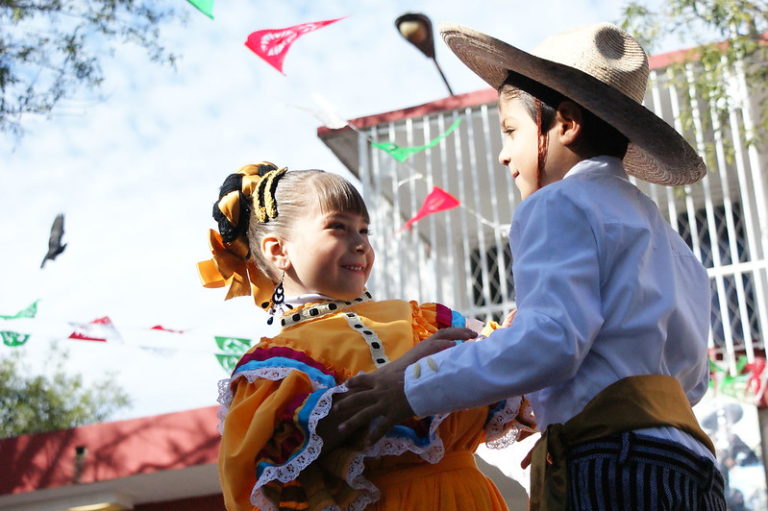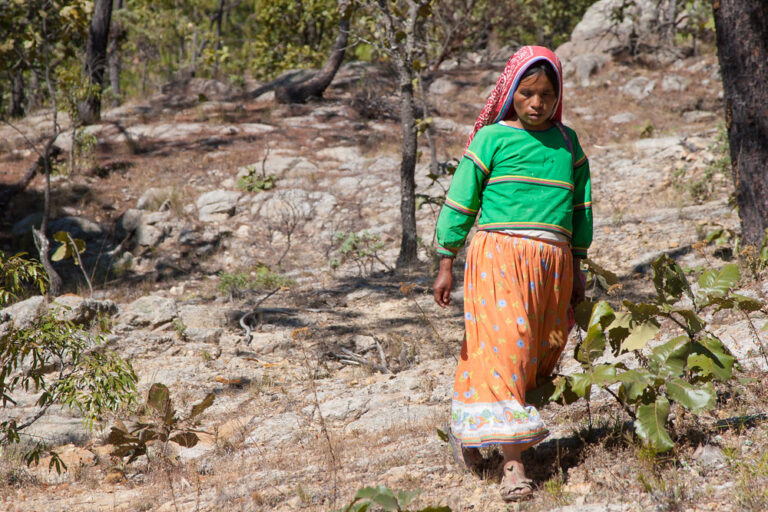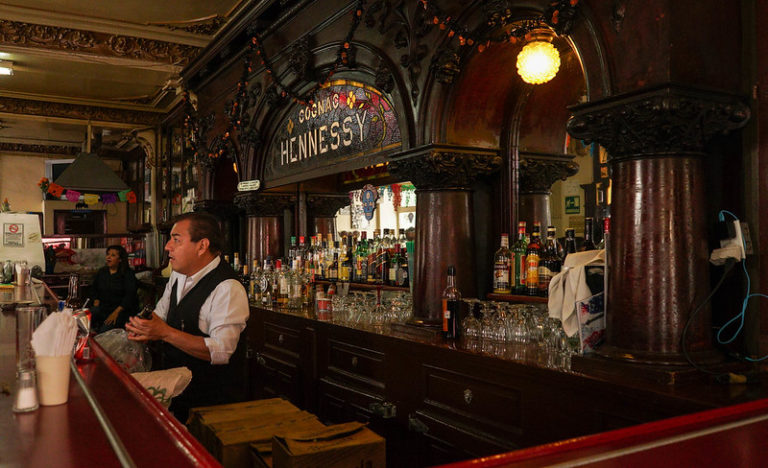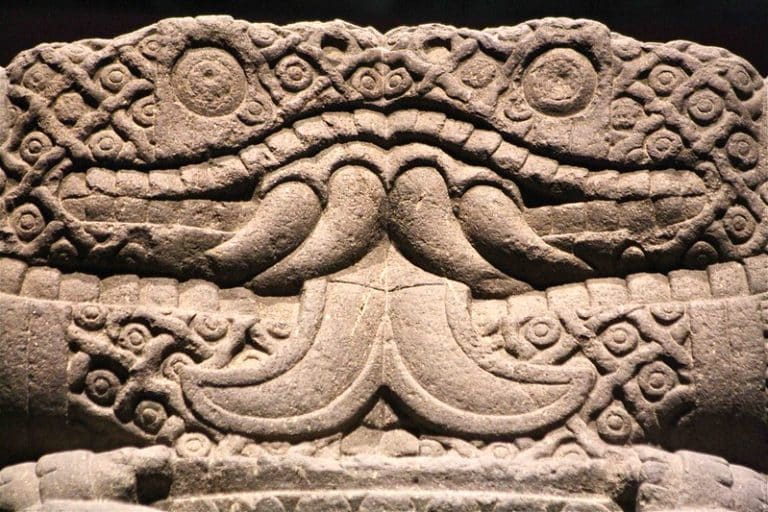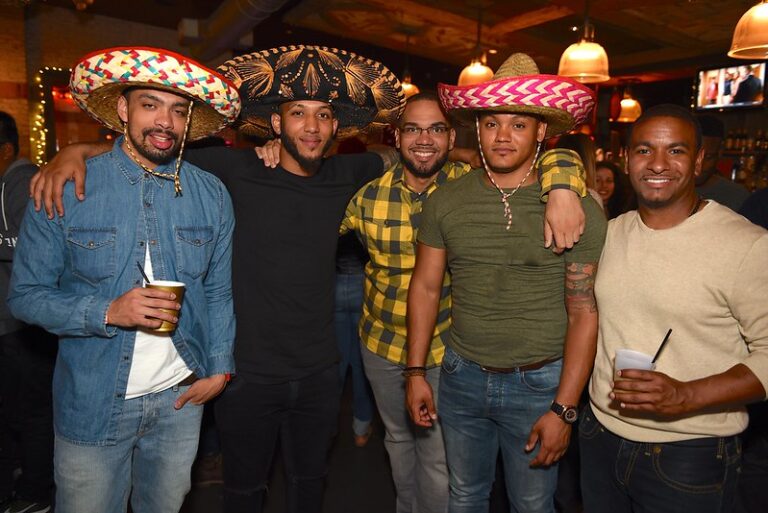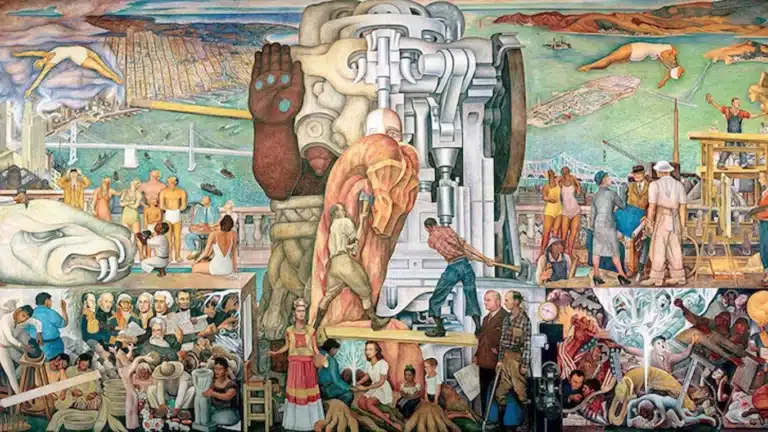Day of the Dead in Mexico: Costumes, Cuisine, and Culture
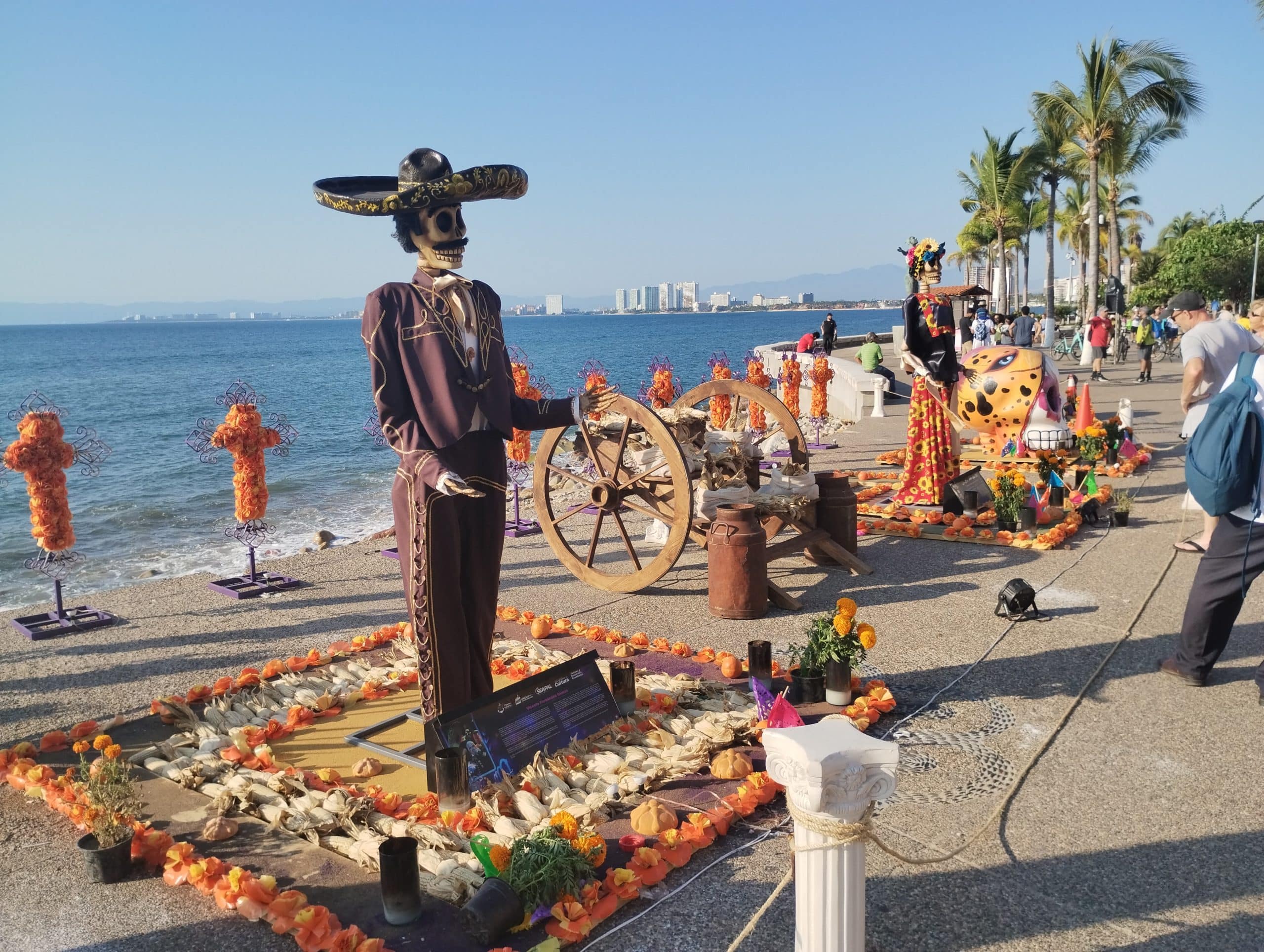
To learn and understand all about the Day of the Dead festivity in Mexico and its meaning, it is necessary to look back in time.
For Mexicans, death is an omnipresent character, while in most cultures around the world, this “belief” is practically forbidden.
Indeed, some historians refer to this ancestral festivity as almost 3,700 years old in Mexico, particularly during pre-Hispanic and colonial times.
The Day of the Dead meaning for the Indigenous People
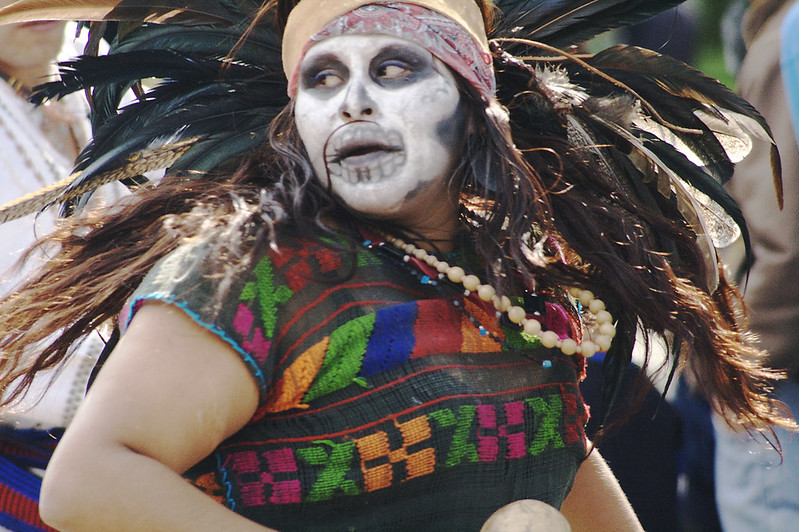
For the indigenous people, death didn’t have the moral connotation of the Catholic religion, in which the idea of hell or paradise means punishment or reward.
The ancient Mexicans believed that the soul’s destiny was determined by the type of death and their behavior in life.
The Mictlan was destined for those who died a natural death.
To cite a few examples, the souls of those who died in water-related circumstances went to Tlalocan or Tlaloc’s paradise.
Those killed in combat sacrificed captives, and women who died in childbirth went to Omeyocan, the paradise of the Sun, presided over by Huitzilopochtli, the god of war.
Dead children had a special place called Chichihuacuauhco, where a tree with branches dripped milk to feed them.
Terror of Death after the Conquest
In the 16th century, after the Conquest, the spread of Christianity introduced the ugly concept of death and hell to Mexico.
For this reason, a mixture of Old and New World beliefs was observed during this period.
Thus, the Colony was a time of syncretism where the efforts of Christian evangelization had to yield to the strength of many indigenous beliefs.
The result was a Catholicism very typical of the Americas, characterized by a mixture of pre-Hispanic and Catholic religions.
At this time, the celebration of the Day of the Faithful Departed began when the remains of European and Asian saints were venerated and received in the Port of Veracruz.
They were transported to different destinations in ceremonies accompanied by flower arches, prayers, processions, and blessings of the remains in the churches.
As well as relics of sugar skulls and the so-called “pan de Muerto” (bread of the dead).
Day of the Dead celebration today
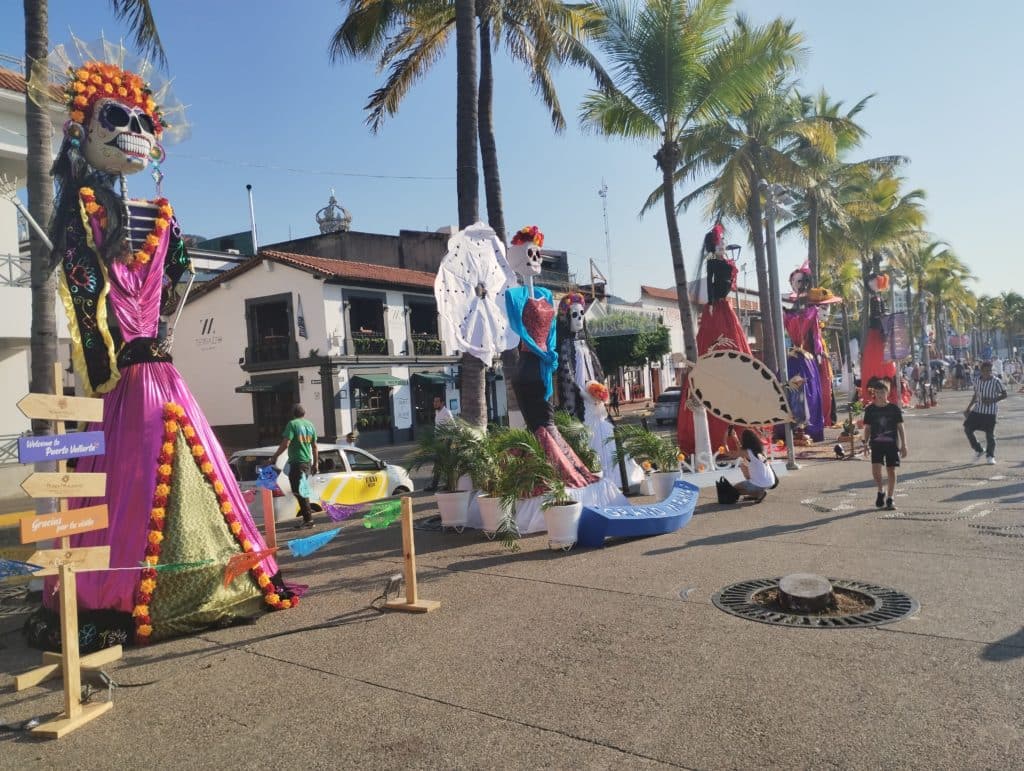
Mexico is a multicultural and multiethnic country, so this celebration lacks a homogeneous character.
It adds different meanings and evocations according to the indigenous people or social group that practices it.
This is why our people have managed to keep their ancient traditions alive.
How long is the Day of the Dead in Mexico?
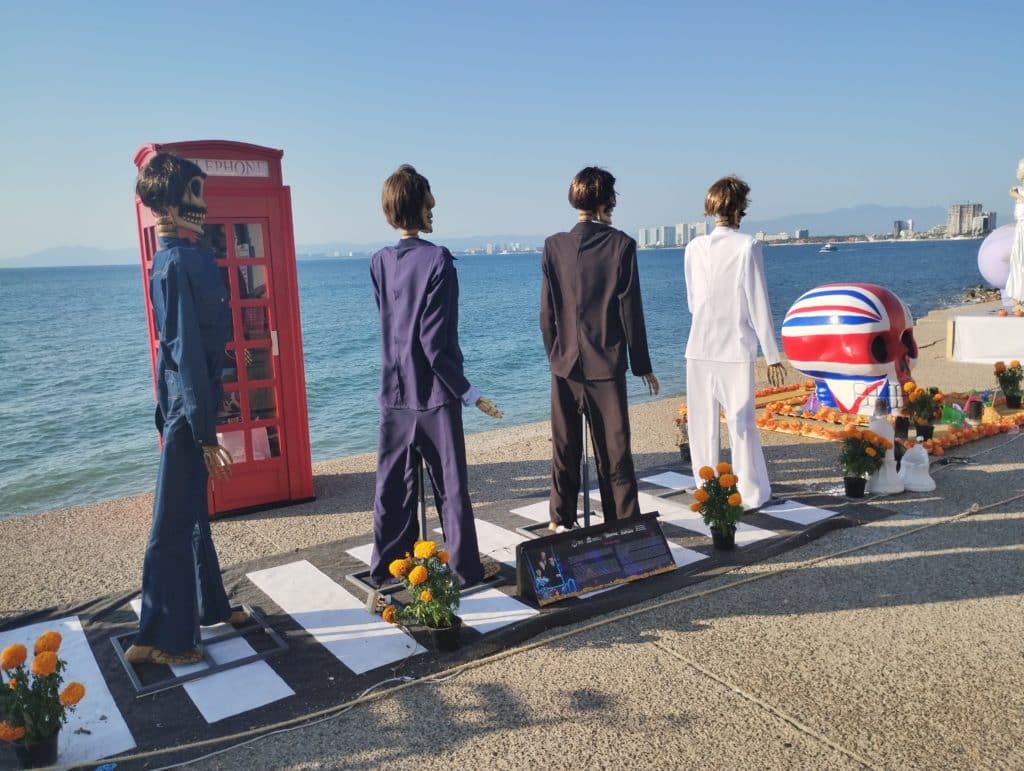
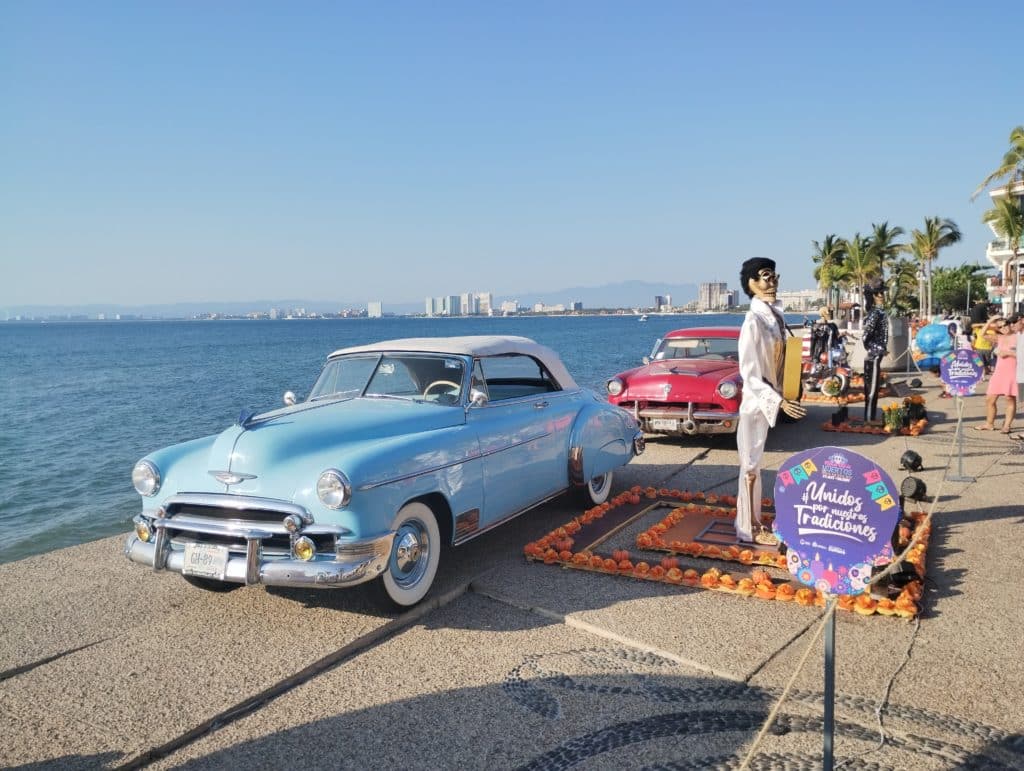
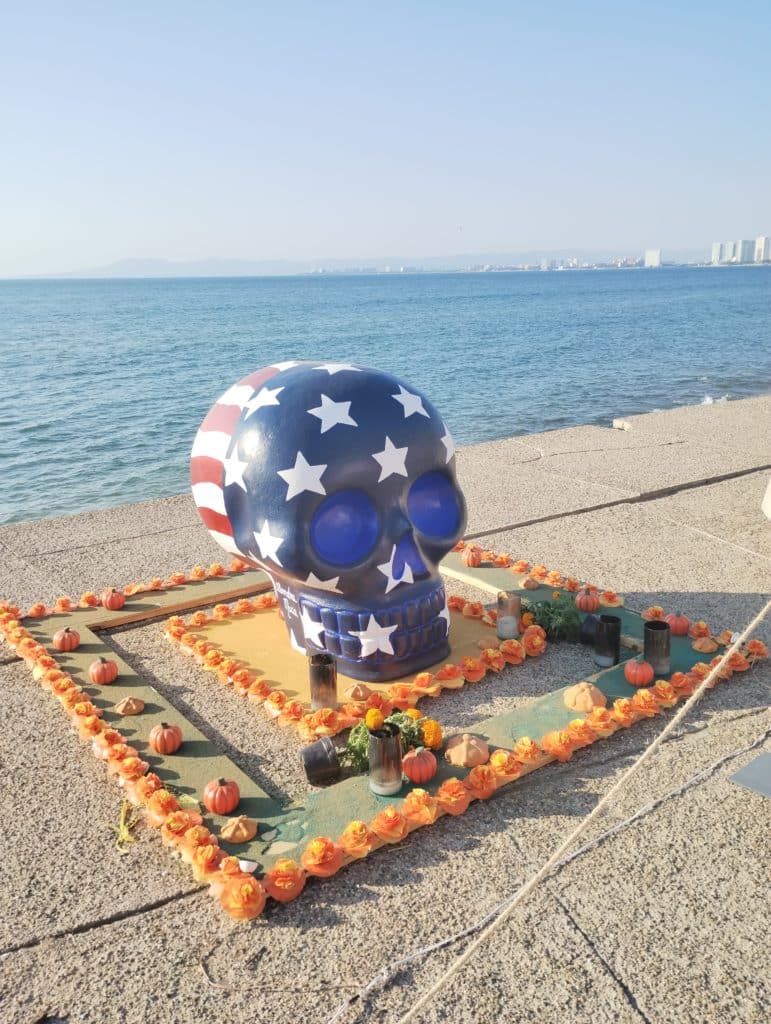
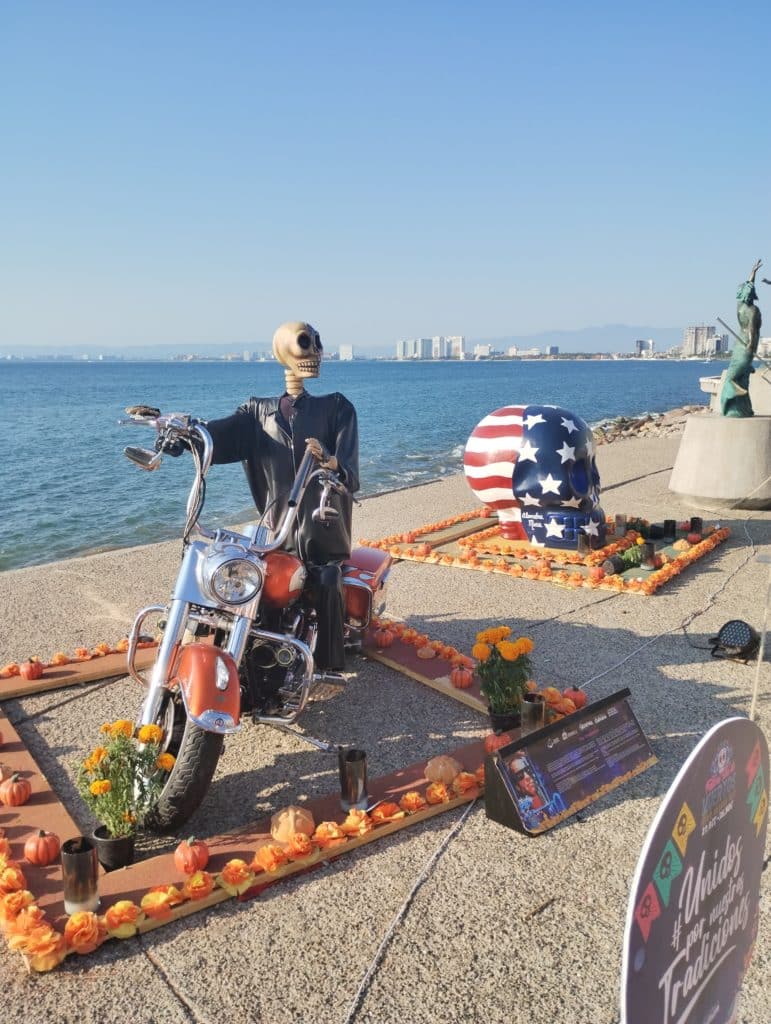
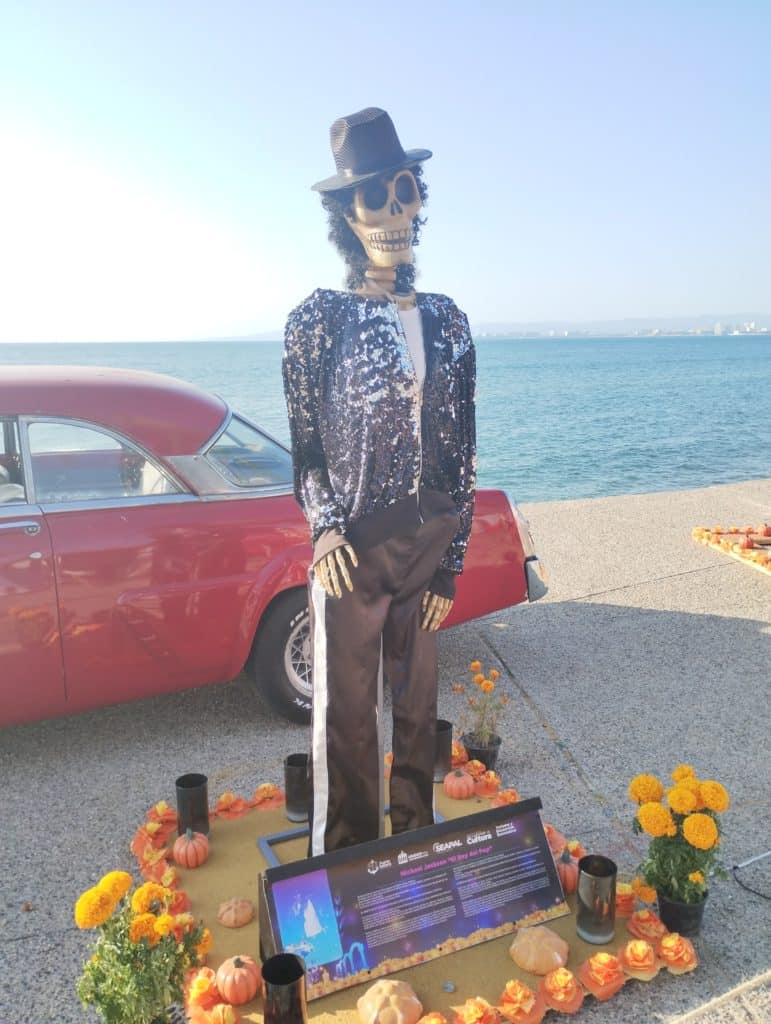
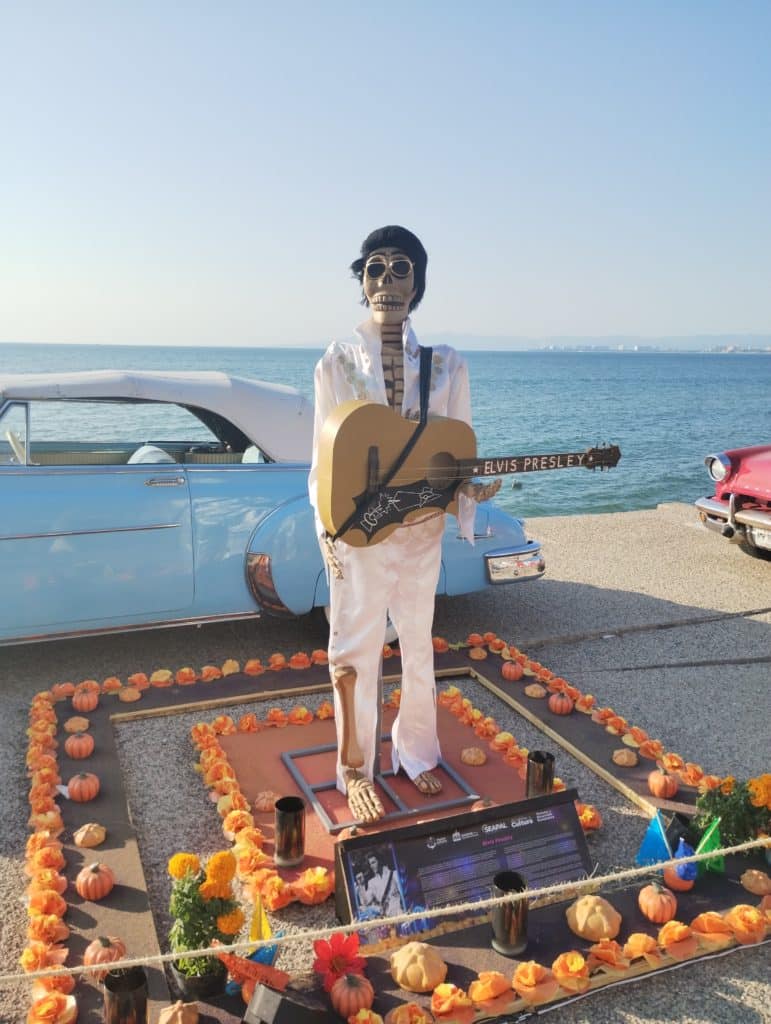
The Day of the Dead is celebrated from the evening of October 31st until November 2nd.
These are days designated by the Catholic Church to celebrate the memory of All Saints and the Faithful Departed.
Of course, indigenous groups and rural communities show the purest essence of these festivities.
It is believed that the souls of the deceased return on these nights to enjoy the dishes and flowers their relatives offer them.
Typical Day of the Dead foods in Mexico
The food is one of the most awaited of the year because no one can resist the peculiar smells of these delicacies.
Below, I will list some of the most traditional and delicious.
All of us who are fans of Day of the Dead, look forward to the arrival of this season.
Here are 5 recommendations to add a touch of good taste to this celebration:
1. Pan de Muerto (bread of the dead)
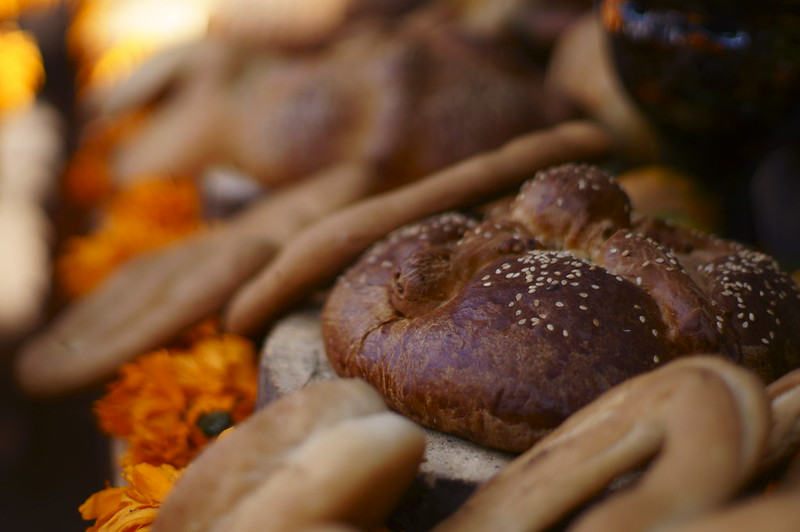
This is probably one of the most traditional Day of the Dead foods; the origin of this bread has many variants.
The peculiar shape of this bread with crossed lines may represent the four cardinal points or the four Aztec deities.
Others mention that it alludes to the tears and bones of the deceased; the center is the heart or the skull.
So, don’t hesitate to dip these “bones” in a good hot chocolate.
2. Dulce de Calabaza (caramelized pumpkin), the best dessert on the Day of the Dead

Considered an original Day of the Dead food from our grandmothers, traditionally served in the “offerings” in clay dishes.
This typical dessert is made with the Calabaza de Castilla, which is large and has a hard shell.
It is prepared with sweet ingredients such as piloncillo, cinnamon, and guava, so once the delicious syrup is ready, it is served and eaten with a spoon.
3. Sugar Skulls
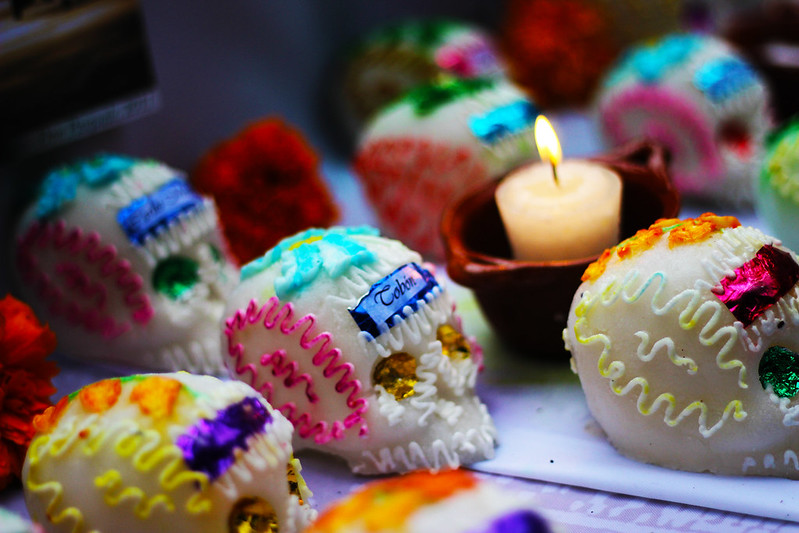
These traditional “calaveritas” are prepared with alfeñique (a type of confection or sweet originating in Spain), an ingredient used since colonial times.
In Mexico, houses are filled with these colorful candies on the Day of the Dead, whose figurines are mainly of sugar skulls of different colors and sizes.
In some states, the “calaveritas” are adorned with chocolate or amaranth.
4. Dulce de Tejocote (Candied Mexican Hawthorne)
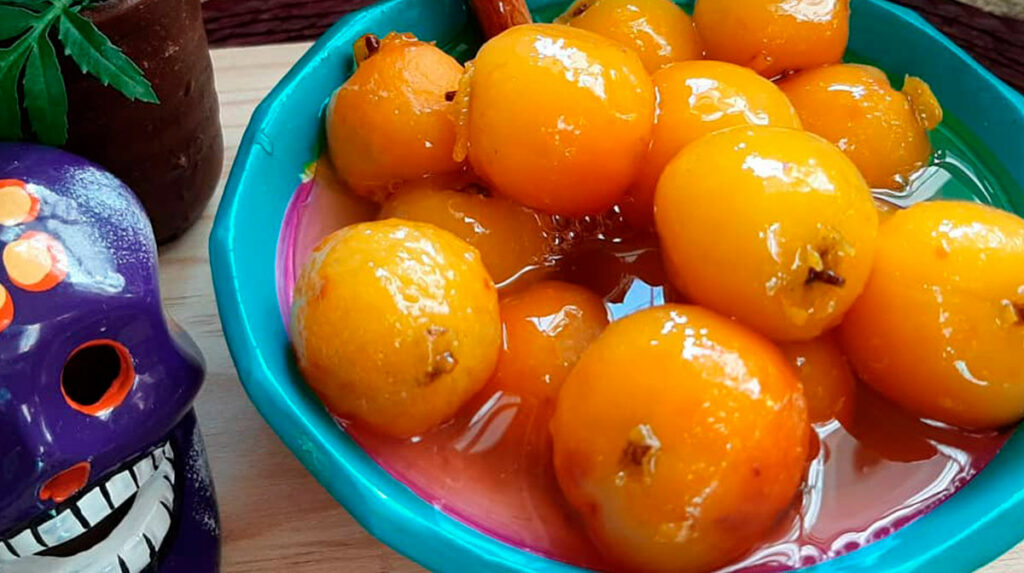
On the Day of the Dead, it is very common to find tejocote.
It is a seasonal fruit, and on this particular occasion, it’s accustomed to preparing it as a sweet.
The tejocote is truly unique because it is one hundred percent Mexican.
5. The Mucbipollo
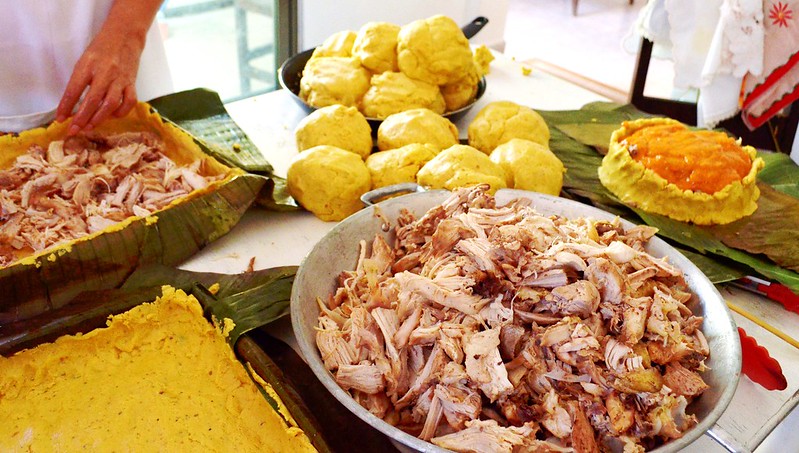
The mucbipollo is a traditional Day of the Dead dish only eaten at this time of the year.
Mucbipollo or pibi pollo means “chicken that has been buried” in the Mayan language, referring to the fact that it is cooked underground as the ancestors did.
It is wonderful that in many communities the custom of cooking in these ovens is still present.
In the Mayan tradition, it must be prepared one night before the Day of the Dead.
The first mucbipollo that is cooked is the one that is placed on the altar of the dead while the families also eat it and share it with great pleasure.
Day of the Dead Altar
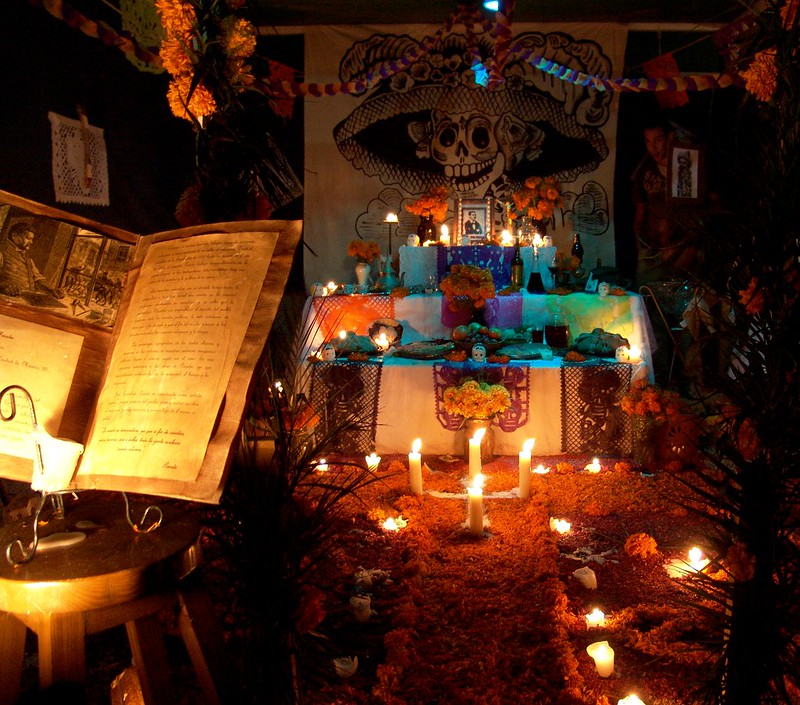
The Altar de Muertos is a significant symbol in the life of Mexicans. It is a beloved memorial offering.
In Mexico, it has been a tradition since pre-Hispanic times to honor those who have passed away and welcome them to the world of the living once a year.
This celebration honors the people who have left us and is held on November 1 and 2.
Coinciding with the Catholic celebrations of All Souls’ Day and All Saints’ Day.
Thus, the Day of the Dead has become a national symbol of Mexico, and its celebrations with colorful ofrendas and altars of the dead are unique in the world.
Altars of the Dead are a blend of two cultures
The altar of the dead is the sum of ancient pre-Hispanic millenary beliefs with the Catholic ones brought to Mexico by the Spaniards in the 16th century.
People never die, only when they are forgotten.
An indispensable part of the cult of the dead in Mexico is the elaboration of altars of the deceased or offerings that are placed to remember and pay tribute to the relatives who have passed away.
What items are placed on the Day of the Dead Offering?
1. Copal incense
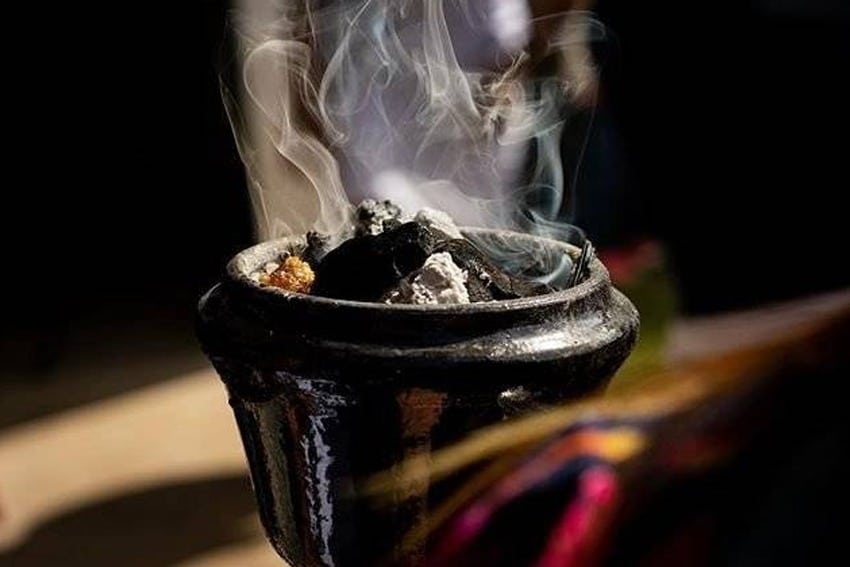
Copal is considered the food of the gods, and it has been used in offerings in Mesoamerican cultures since ancient times.
The pre-Columbians used a sacred tree resin, copal, for festive and medicinal uses and placed offerings to flatter their gods.
Copal symbolizes the purification of the soul and fulfills the function of guiding the deceased to the offering.
2. The arch
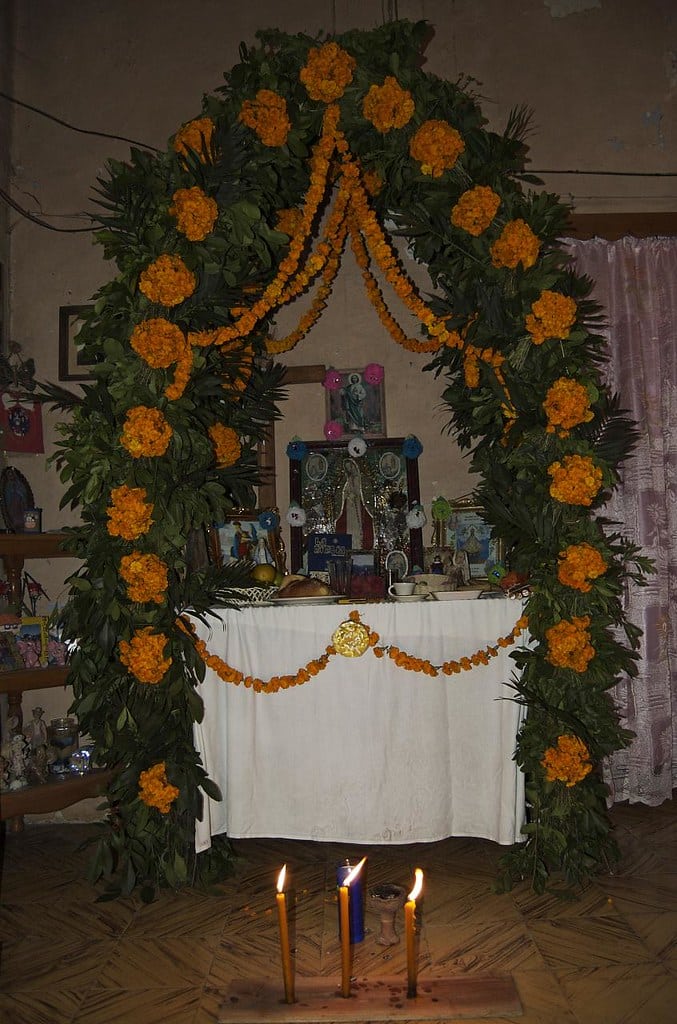
What is the meaning of the arch in the altar of the dead?
The arches represent the gateway to the world of the dead, the eighth level that must be followed to reach the Mictlan and meet Mictlantecuhtli.
The arches are generally made of reed, baby palm, or iron; their decoration includes papel picado (pecked paper) and cempaxúchitl flower.
In some cases, they are also decorated with fruits.
3. Papel picado (pecked paper)
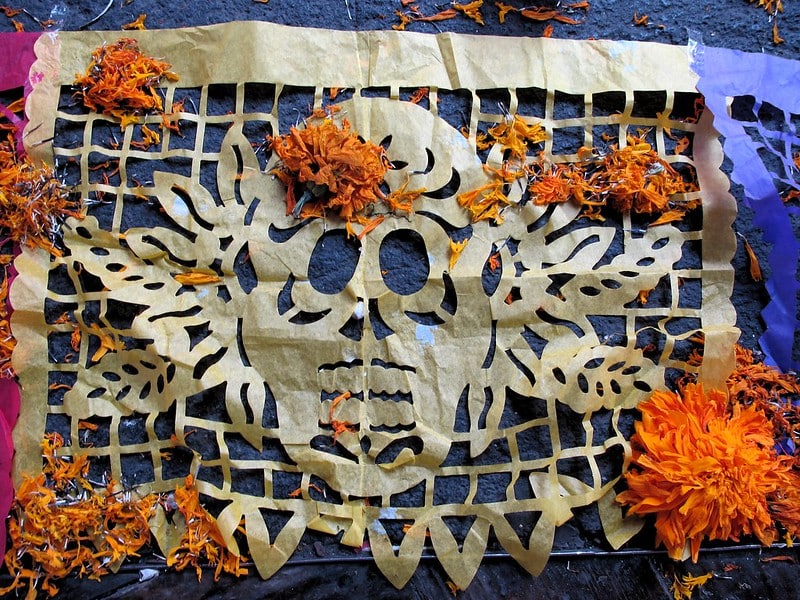
What is the meaning of papel picado on the altar of the dead?
Papel picado originated during Aztec times when it was already used to represent the wind, one of the four elements of nature.
Thus, papel picado in the altars of the dead is used in different colors. For example, yellow represents purity, and purple refers to mourning.
In addition, today’s papel picado has the skulls of the great Mexican engraver José Guadalupe Posada among its main designs.
4. Cempasúchil flower
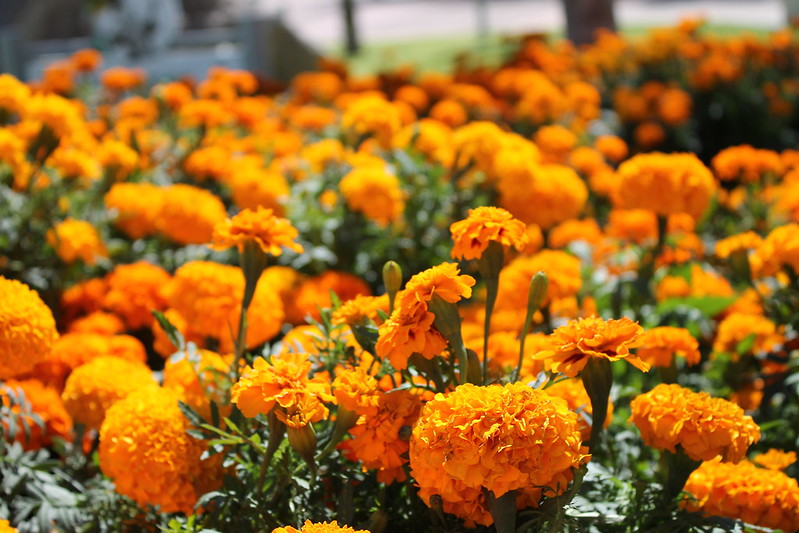
The pre-Hispanic people considered this Mexican flower a symbol of life and death.
It makes petal trails to guide the souls from the house’s entrance to the altar.
The orange Cempasúchil flower is native to Mexico, and its name comes from the Nahuatl “Cempohualxochitl,” which means “twenty flowers” or “several flowers.”
Our ancestors associated its color with the Sun. For that reason, they used it in their offerings to honor their dead.
5. Nube y Alheli
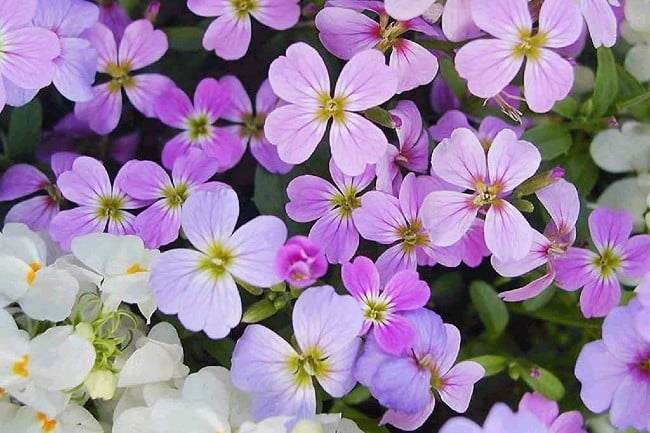
These flowers are iconic in the festivity because of their colors and aromatic trails.
They naturally decorate and aromatize the place during the soul’s stay, leaving them very happy when they return to their world.
The “wallflower and the cloud” should not be missing since their color means purity and tenderness; above all, they accompany the children’s souls.
Flowers are one of the essential elements of the Altar of the Dead and serve as a symbol to welcome them back to the world of the living.
6. The fire element (candles)
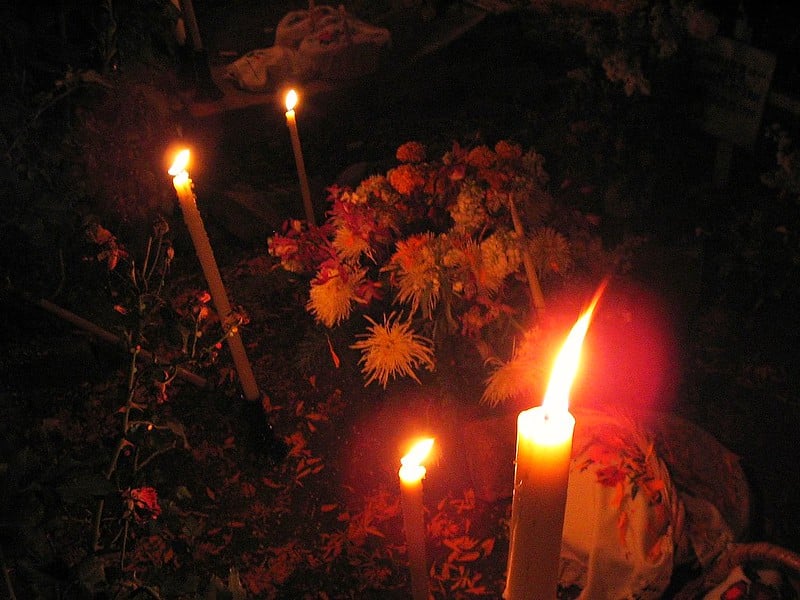
In ancient times they used ocote leaves; nowadays, people use candles because the flame they produce means light, faith, and hope.
Likewise, the fire in the altars of the dead also represents the guide for the soul, even the light on its way back to the world of the dead.
In the ofrenda, the first thing that should be placed is the “guides of light.” So the souls know that we are getting ready to receive them.
7. The water element
Likewise, water has more than one meaning for the altar of the dead, such as quenching the spirit’s thirst.
The Mayas, for example, had the belief that the cenotes, which they considered sacred, were a door to the underworld.
For example, a glass with water can represent water on an altar.
However, the Mayas usually placed a dish with water, symbolizing a cenote and the entrance to the underworld.
8. The Earth element
The representation of the earth is also a vital element in the ofrenda.
For the pre-Hispanic cultures, the earth was the giver of life, so it was regarded with great respect.
Corn seeds, cacao, and others are placed depending on the region representing the earth.
9. A lime powder cross
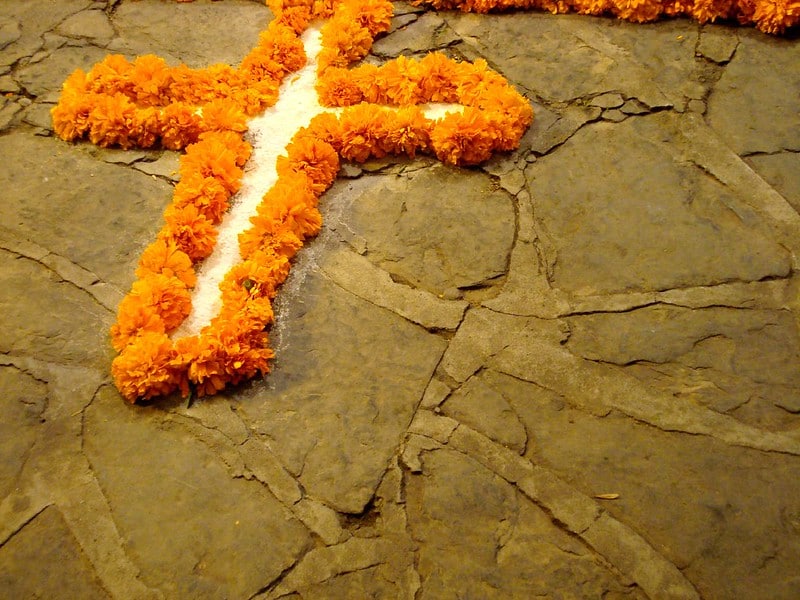
A Catholic cross should be placed at the foot of the offering so that when the soul arrives, it can sanctify itself before taking its food.
This cross can be made of lime or earth from the house that receives the deceased.
In some parts of Mexico, it is made of fruit or Cempasúchil flowers.
It should always be made with your bare hands, and it is recommended to offer a prayer so that when your deceased arrive, they will find your good fortune.
10. Sugar skulls
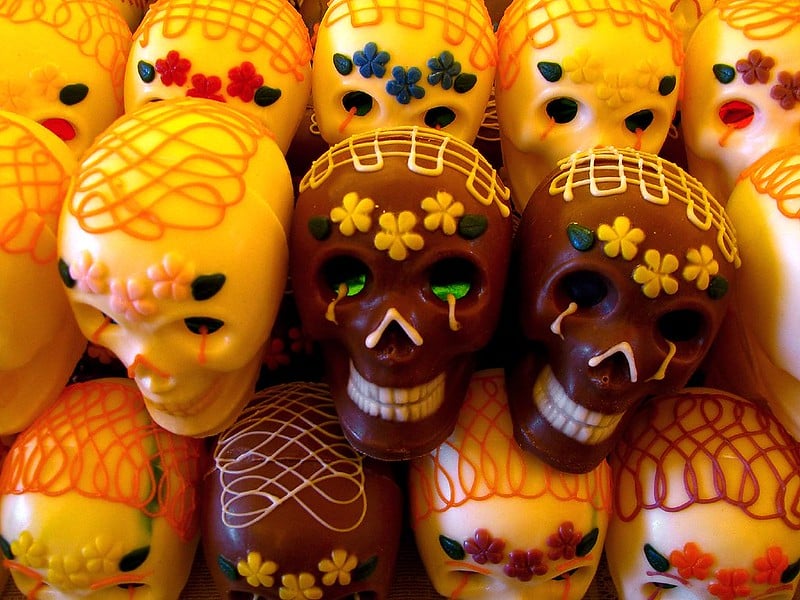
The skulls’ origin is related to the tzompantli, which represented the death of the Aztec warriors.
As I mentioned before, the skulls used today in the Mexican Altars of the Dead are candies that can be made of sugar, chocolate, clay, tamarind, or amaranth.
They can have the names of the living on their foreheads to remind them that life is sweet but carries death inside.
11. Food and beverage
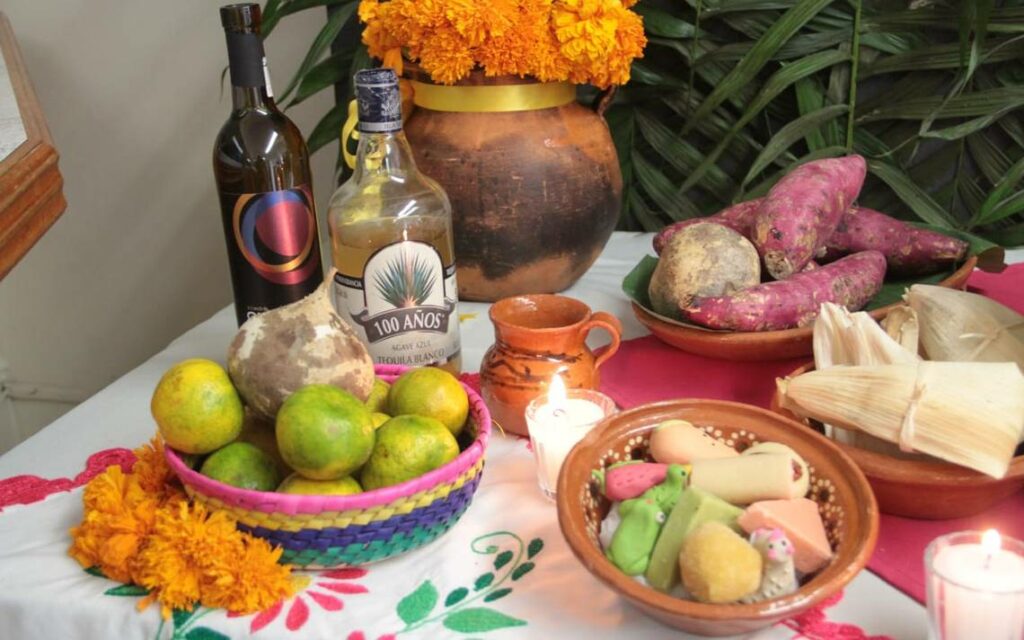
Traditionally, the food on the altar should be for the person it is dedicated to and what they most liked to eat while they were alive.
Since this is Mexico, the most common dishes to put on an altar are:
They should be freshly homemade stews, just as the deceased liked them.
You can also put a wine glasses or their favorite “intoxicating drink:”
Of course, other beverages such as hot chocolate or pozol can also be added.
12. Pan de Muerto
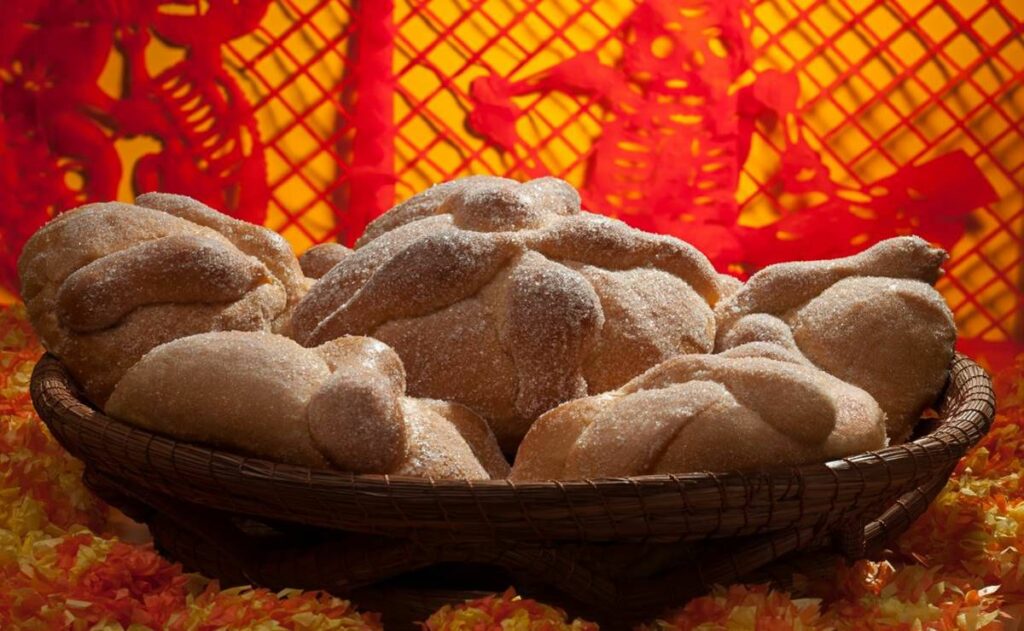
Pan de Muerto (bread of the dead) should never be missing in your ofrenda.
This bread descends from the “cornbread” already made by the civilizations of ancient Mexico.
The bread represents the Eucharist in the Catholic religion.
As I mentioned, this bread has a couple of strips on the top representing the bones and a crown emulating the skull.
Sometimes, they place sesame seeds representing the tears of the souls.
13. A picture of the deceased

What is the meaning of the photograph on the altar of the dead?
Placing a picture means offering the altar to that relative of yours.
Others say it helps the souls find themselves and know how to get to the ofrenda built in their honor.
But the strongest belief is that as long as the photograph or portrait is placed, the person will not die because they are still alive in the memory of their relatives.
14. Purifying salt
This element is crucial. It helps the body not to be corrupted during spiritual transfers, especially children’s souls.
The souls are believed to return to enjoy their favorite drinks and dishes, and salt helps them on their way.
How is salt placed on the altar of the dead?
Some people place them in simple clay dishes, while others prefer to draw a small salt cross.
15. Xoloitzcuintli Dog
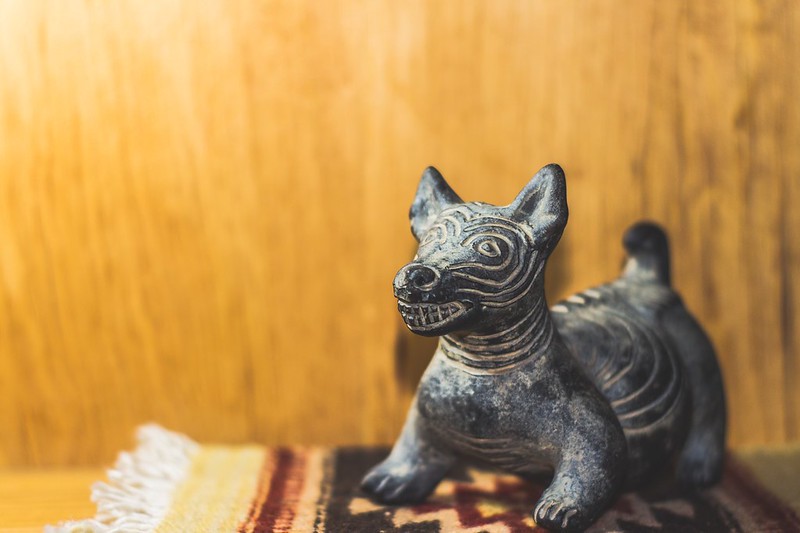
This funny-looking dog represents the god Xólotl.
A spiritual guide that helps the souls cross the Chiconauhuapan River, the last step to reaching the underworld.
The “Aztec Dog” is the faithful companion to the last path: the journey to the Mictlan.
Placing it in the offering makes sense because it can guide the souls on the right path back to where they came from.
16. The petate (a rustic bedroll)
The petate is used for the dead to rest and can function as a tablecloth to place the elements on the altar of the dead.
Other elements of the Altar of the Dead
- Clothing, the deceased’s favorite garment
- Some objects used by the deceased in their work
- Toys on the Altar of the Dead for children
- Figures such as the catrina made of alfeñique, kraft paper, wood, clay, or plaster
- Religious elements such as crosses, images, or rosaries
- Gold coins, a Greek tradition that was adopted in some Day of the Dead altars
So now you know everything that an altar of the dead should have.
However, the most important thing is that whatever you put on it comes from your heart.
Day of the Dead Costumes: The 14 Favorites of Mexicans
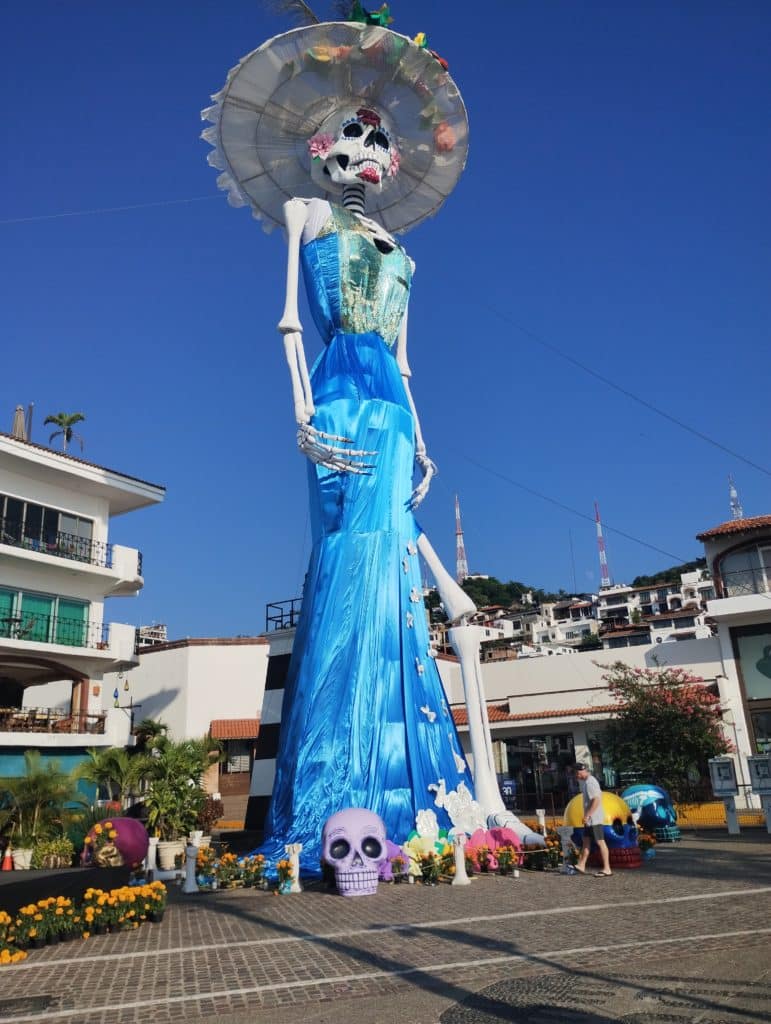
Day of the Dead costumes are unique for these Mexican festivities, there is a wide variety, and here I will show you which are the favorites. Let’s begin.
1. Calavera (skeleton)
Without a doubt, I will start with the most traditional and fun Day of the Dead costume because the skull, besides representing a human skeleton, symbolizes death.
But not the sad side of death. Remember that this is a celebration of fun and joy, a way to remember a loved one that transcends to the afterlife.
What does the skeleton symbolize?
The skeleton costume represents the memory, death, and the basis that keeps us alive in a deeper dimension of our real identity.
I recommend complementing this costume with good skull makeup.
2. The Catrina: A must-have Day of the Dead costume
I guess I could say that Catrina is nothing more than the female version of the skeleton.
The origin of the catrina is really peculiar since it emerged as a criticism of Mexican classism.
The creator was José Guadalupe Posada, who called it “La Calavera garbancera,” but he only drew the head.
What does the catrina mean?
The meaning Posada gave it is that death equals us all. Whether rich or poor, we will all end up on our way to Mictlan.
As time passed, the “Calavera garbancera” changed to “La Catrina” because of Diego Rivera.
In Diego’s famous mural “Sueño de una Tarde dominical,” he gave the skull a body and mentioned that it was the female version of the catrín.
The image of the catrina is very elegant and detailed, so the costume consists of a long dress that can be in dark or bright colors.
Flowers and colorful makeup are placed on Catrina’s head.
This is the main feature of this costume—one of the most used by women for the Day of the Dead celebration.
3. La Llorona
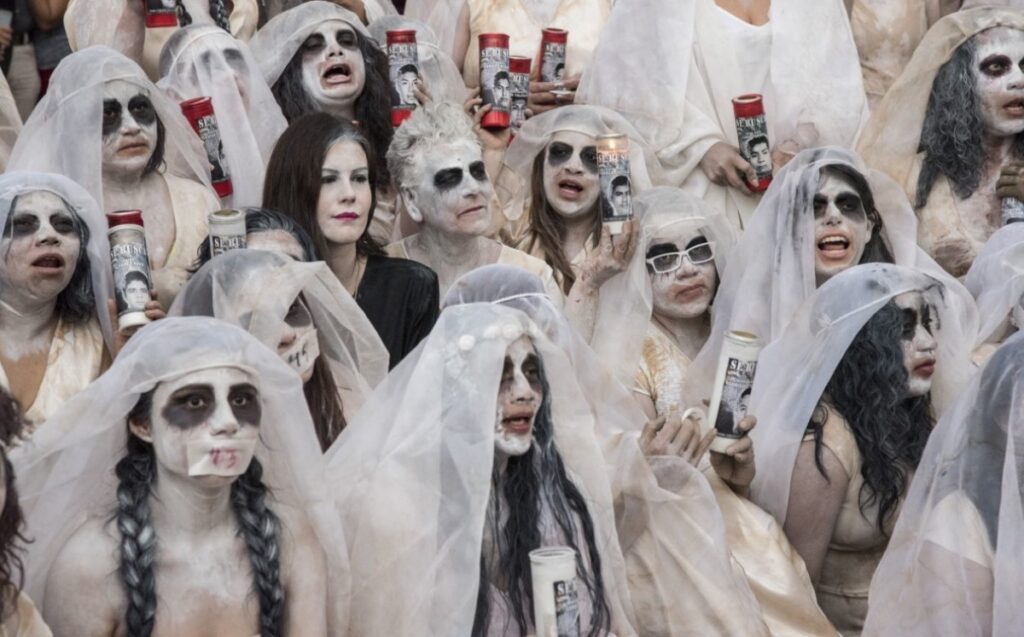
Of all the Day of the Dead costumes, the “Llorona” is one I like the most.
But who was the Llorona?
According to a legend, la Llorona is a Hispanic folklore vengeful ghost.
This “weeping woman” appeared near the rivers, and people could hear her scream and mourn her drowned children.
4. Alebrijes: One of the most colorful Day of the Dead costumes
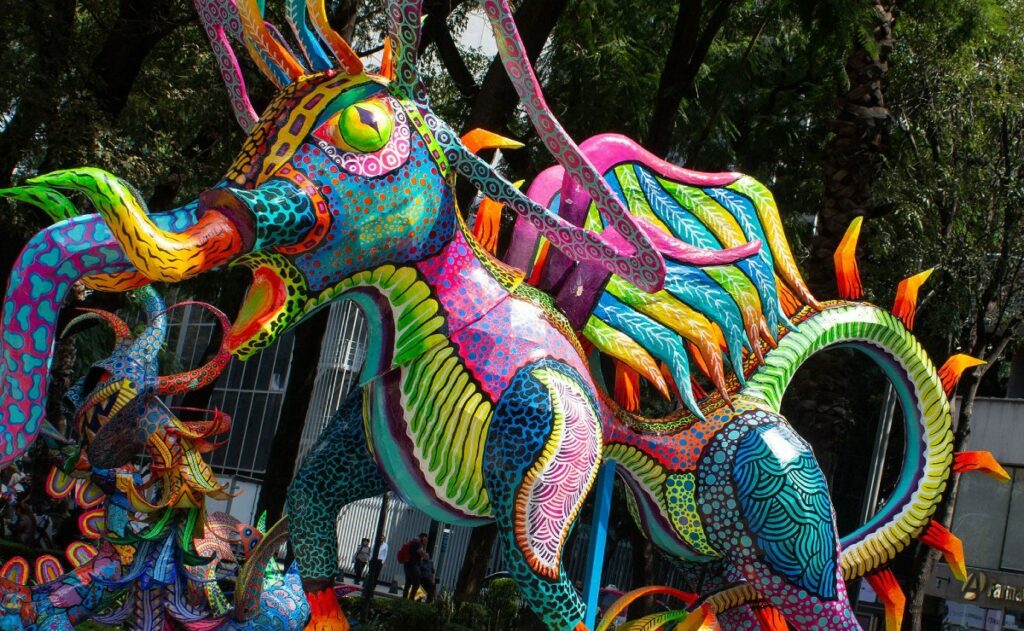
Alebrijes are nothing more than Mexican handicrafts.
Produced from a mixture of animals and plants, these vibrantly colored creatures for the dead signify a guide.
It is said that an alebrije is assigned to a soul from the afterlife and, along with the light of the cempasúchil flowers, illuminates the way for the Day of the Dead to reach the ofrenda placed for him by his family.
In the same way, they are also protectors of the souls beyond being a guide. They take care of them in their world.
Nowadays, besides being a representative Mexican figurine, you can dress up as one of them.
The Day of the Dead alebrije costume consists of a mask of some creature with a simple, colorful dress that simulates the alebrije’s body.
If you can’t find a mask, you can get creative and paint your face as one.
5. Pumpkin costume
Not all Day of the Dead costumes come from Mexican traditions.
There are others, like the pumpkin costume that comes from the Halloween celebration.
However, it is common to see children dressed up as spooky pumpkins, especially babies.
It is said that this particular costume comes from the story of Stingy Jack, a man who lived by gambling and was very cheating.
6. The Catrin
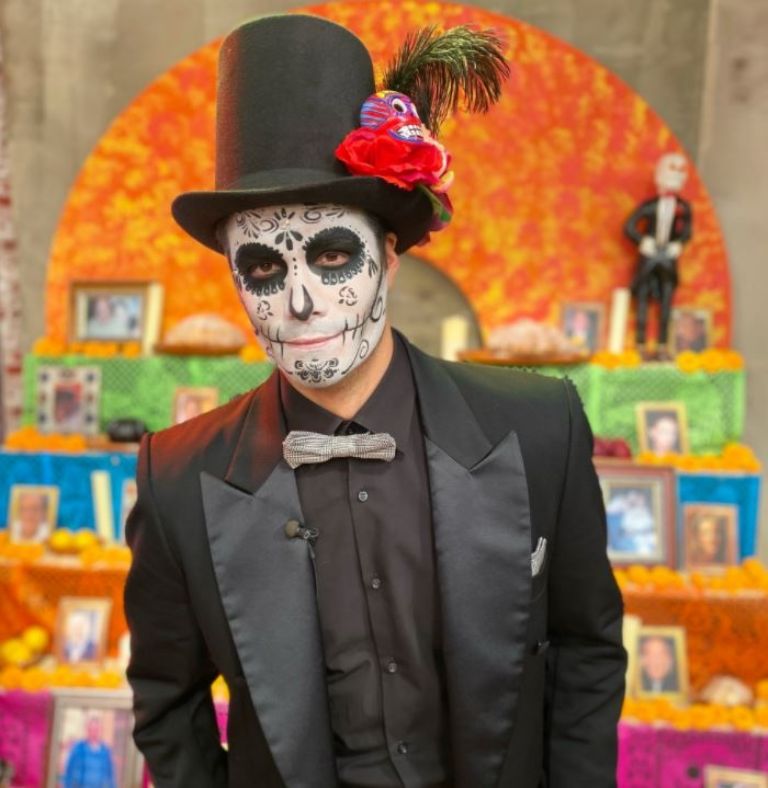
Catrín was the term used to refer to elegant men of the upper class in Mexico in the old days.
Indeed, this term was very popular during the Porfiriato. When going through the streets, it was very common to find “catrines.”
It was also characteristic to see a Catrin accompanied by an elegant woman. That is where Catrina is referred to.
The attire of the Catrin was a suit of ducktail or long coat, a cane, and a bowler hat.
Nowadays, it is one of the most common Day of the Dead costumes, and skull makeup is added to the attire.
7. Mictlantecuhtli

Earlier, I mentioned a little bit about who Mictlantecuhtli was. He is the god of death and darkness.
In fact, his name is of Nahuatl origin and is divided into two, Mictlan, which means “mansion of the dead.”
And Tecuhitli, which means “lord,” translates as the lord of the mansion of the dead.
He guards the souls of the dead in the underworld and is the caretaker of their new lives.
8. The Nahual costume
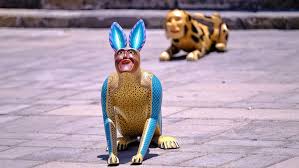
This creature called Nahual has a fascinating history. The word nahual means “that, which is my garment.”
It is said that when we are born, at the same time, an animal is born who becomes our guide and protector.
This creature is called tonalli, the spirit of each person, but just as it is born with us, it also dies simultaneously.
However, people who connect strongly with their animal, their soul can become their creature.
It can even transform itself into another, and these people are called Nahuales.
On the other hand, another idea is that Nahuales are witches or shamans who transform only to protect themselves from evil.
Now, the costume can be diverse since it is not a specific creature. It consists of a mask of an animal skull.
It also has a type of feather with horns, but it can represent the transformation of any creature.
9. Black Charro
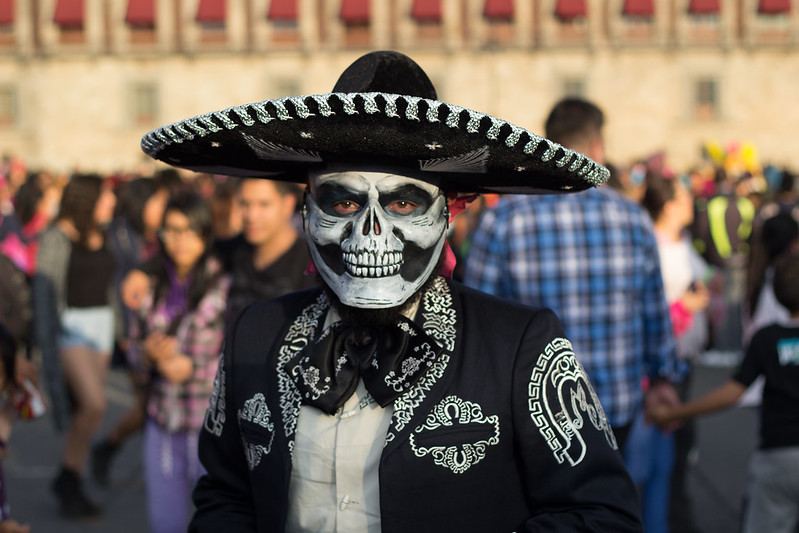
This costume was born from famous Mexican legends and typical representative elements of the country, such as the charro costume.
And I must say, it is one of the coolest and most interesting Day of the Dead costumes.
Who is the black charro?
The legend says that the black charro in life was a man of few resources but very ambitious, who loved to be well dressed.
However, tired of his situation, he contacted the devil, who offered to give him wealth in exchange for his soul.
The black charro accepted the deal without thinking, but after a while, he wanted to escape from the devil’s hands.
He grabbed his horse, put on his charro suit, and took a bag with gold coins.
Certainly, he was trying to escape from the devil so that neither his wealth nor his soul would be taken away, but everything went wrong.
The devil overtook the charro, taking everything from him and punishing his soul to wander and become the collector of his debtors.
10. Miguel “Coco movie”
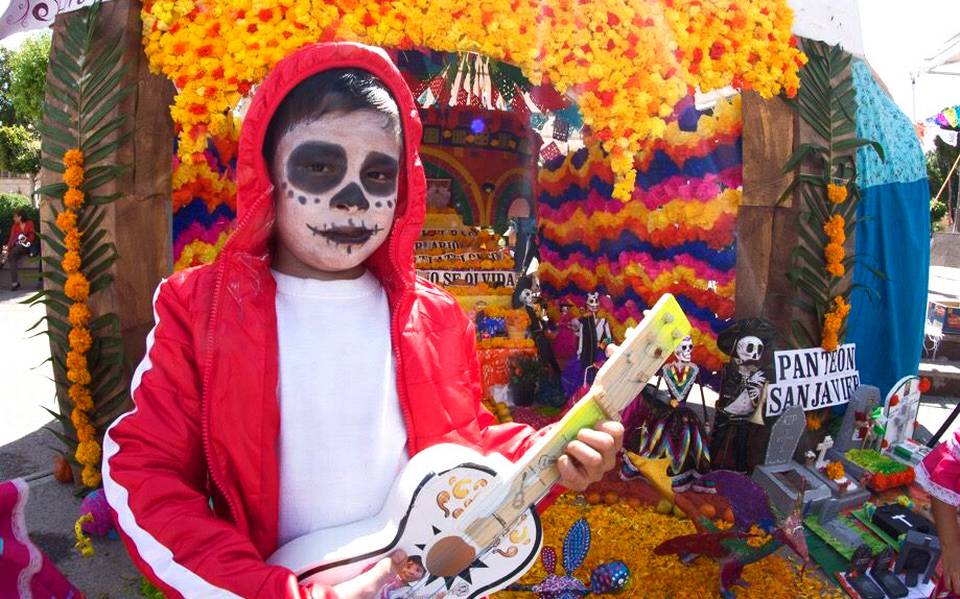
Since the Coco movie came out, this costume has become one of children’s favorites.
This movie talks about the Mexican tradition of the Day of the Dead, and Miguel is the main character.
It reflects a 12-year-old boy whose dream was always to be a musician. However, his family hated music, so he could not dedicate himself to it.
But he didn’t give up, he looked for the tomb of his favorite singer Ernesto de la Cruz, and when he arrived, he saw his guitar, played it, and was transported to the world of the dead.
And that’s where the adventure begins for Miguel de Coco, a very tender, sympathetic, and passionate character.
Miguel’s costume is simple: a red hooded sweatshirt, blue jeans, a guitar, and skull makeup.
11. Mama Imelda
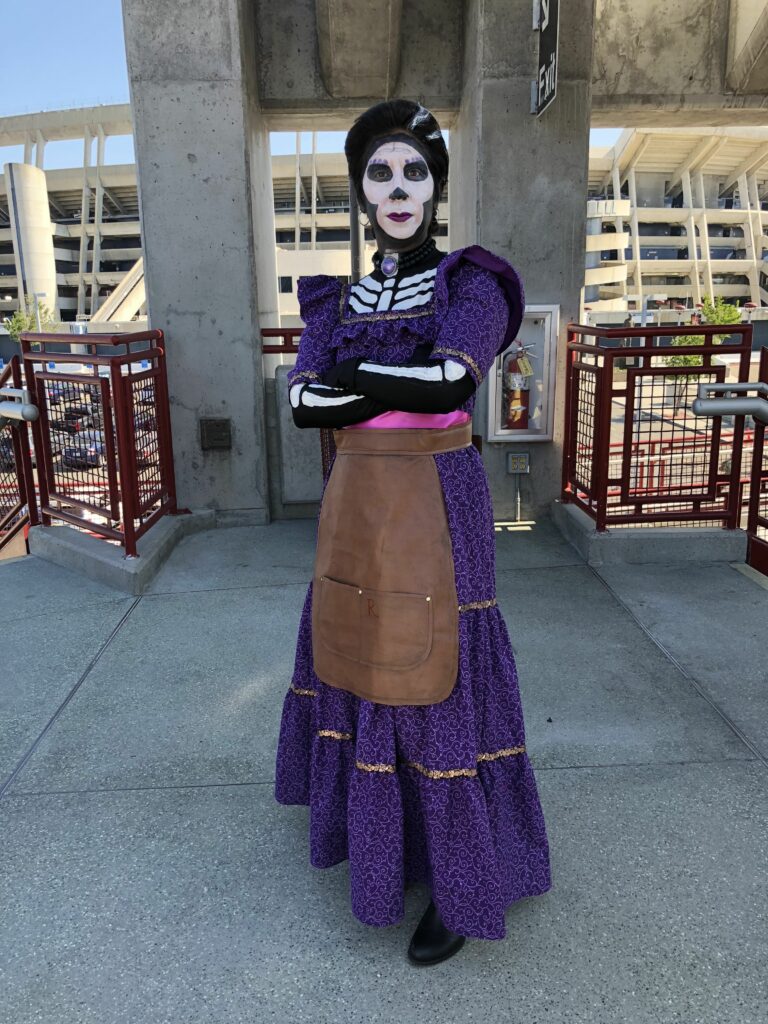
This character is also one of the Day of the Dead costumes featured in “Coco.”
It turns out that Mama Imelda is Miguel’s great-great-grandmother and the one responsible for the family not talking about music.
She began to hate it when her husband Hector went to pursue his musical dream and never returned to his family.
But when Miguel enters the world of the dead, she gets a big surprise because even though she said she hated music, she feels the same way Miguel did deep inside.
So she discovers the importance of Miguel’s dream and decides to support him.
If you want to dress up as Mama Imelda, she wears a long dress like a catrina dress, a shawl, her hair up and braided, and skull makeup.
12. Hector de Coco
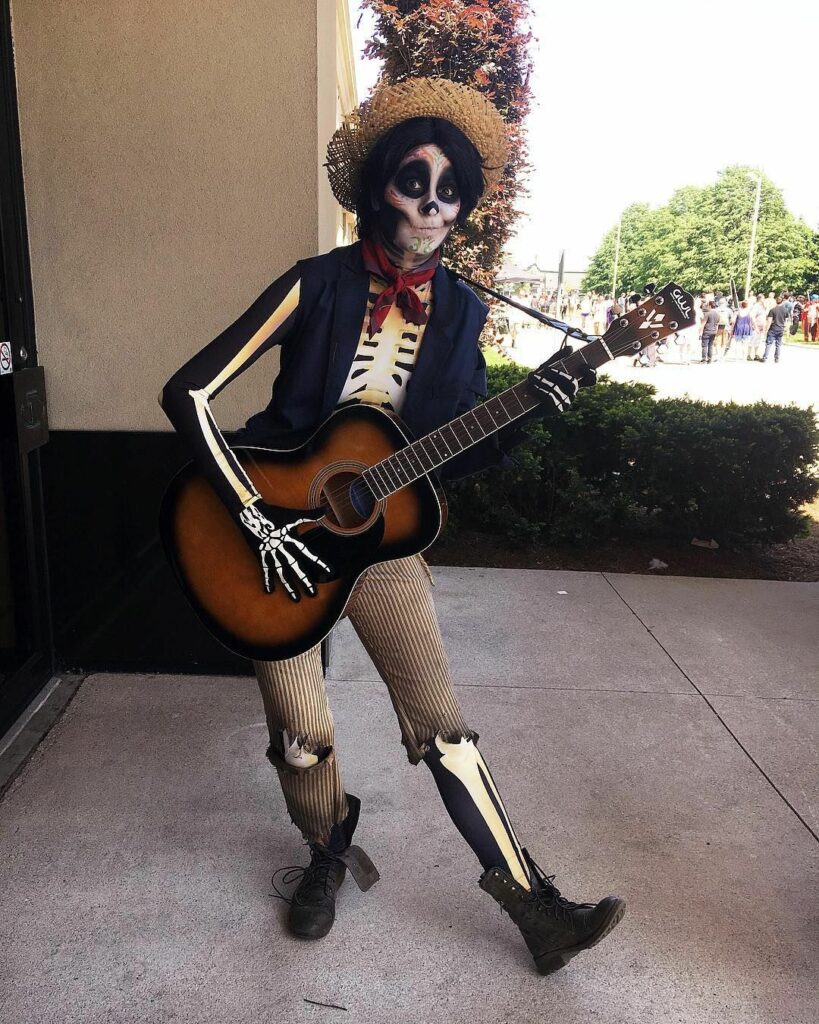
Hector is another main character of “Coco.” He is Miguel’s great-great-grandfather.
In the movie, Miguel meets Hector and tries to help him so that his picture appears in his offering and he does not disappear from the world of the dead.
Later they discover that they are family, and Hector is reunited with his beloved Imelda.
Indeed, this character gives sparkle to the film because it is cheerful and optimistic, so it’s one of the favorite costumes.
It consists of a white or beige shirt, brown pants with suspenders, a hat, and the typical makeup of a skull.
But the final touch that can not miss is adding a guitar to the costume, representing this character.
13. Diego and Frida Khalo: The most typical Day of the Dead costumes for couples
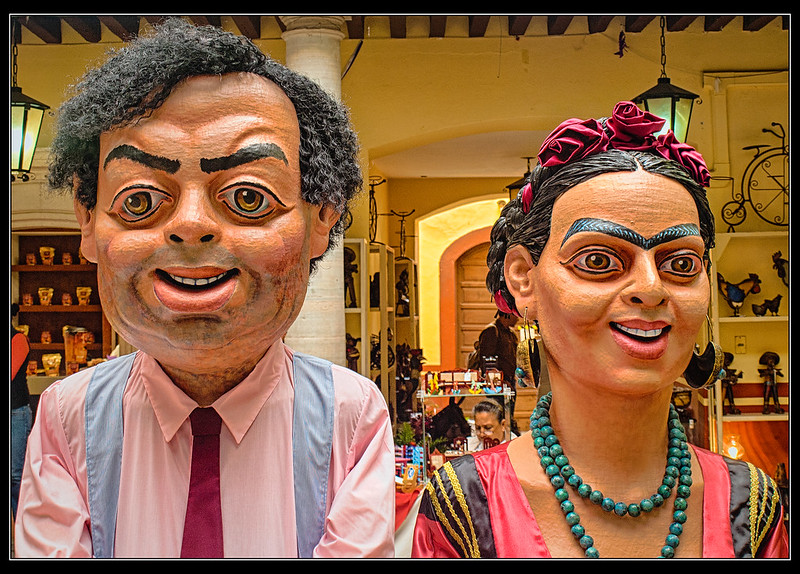
Frida Khalo and Diego Rivera were two great Mexican painters who marked a great trajectory with their works of art.
They were a confusing marriage, with tragedies, but also full of success due to their talent.
Frida Khalo had a highly complex life because of her illnesses and a tragic accident that caused her body to be in constant pain.
However, this did not prevent her from becoming one of the best Mexican painters since her art was based on her experience and feelings.
On the other hand, Diego Rivera was more dedicated to murals depicting important political and social themes.
Among them is “La creación” and “sueño de una tarde dominical en la alameda central.”
And well, if you want to dress up as this great couple of painters, their costumes are easy and fantastic.
For Frida’s costume, you can use a long skirt with Mexican details, a white blouse embroidered with flowers, a shawl, and braids with flowers on the head.
And for Diego’s costume, you can use neutral colors like gray or blue. Also, wear a low-top hat, and it will look great.
14. Lord of the sack
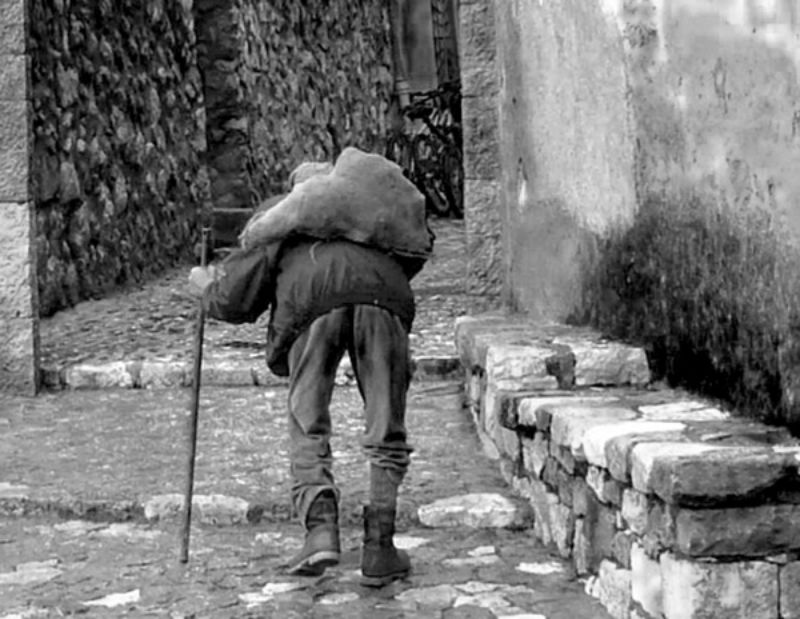
Undoubtedly this is one of the Day of the Dead costumes with a terrifying story.
In Mexico, parents use this character to scare naughty children, saying that the “señor del costal” will steal children and will come for them.
But beyond that, it is said that the “señor del costal” was a healer who did not use traditional or natural remedies.
One day a man suffering from tuberculosis, tired of going to doctors and not finding a cure for his illness, approached the healer.
He agreed to help but told him the cure was drinking children’s blood. The healer, without hesitating, said to him that he would help him find the child.
So he searched for a little boy; it didn’t take long to find him and put him inside a sack.
Then he arrived with the sick man and stuck a cold-blooded knife in the boy’s armpit before him.
The man drank the blood, and as if by magic, he cured his illness.
And so it was for a long time; however, when the healer died, he was condemned, and his soul wandered looking for children with his sack.
This character’s costume consists of a suit with an old, messy look, a cloth sack, a hat, and a cane.
No doubt the children will be afraid of you with this.
Day of the Dead in Mexico: Final thoughts
Día de los Muertos is much more than a time-honored tradition; it is a vibrant celebration of life, love, and memory.
From the intricate costumes adorned with skulls and marigolds to the rich, flavorful cuisine that pays homage to departed loved ones, every element of this festival is imbued with deep cultural significance.
The streets come alive with parades, music, and dance, creating an atmosphere of joy and reverence.
The ofrendas, or altars, are poignant symbols of this connection, beautifully decorated with photos, mementos, and the favorite foods of those who have passed on.
This act of remembrance reinforces familial bonds and keeps the memories of ancestors alive.
By immersing ourselves in the costumes, cuisine, and culture of Día de los Muertos, we gain a profound appreciation for the ways in which this festival honors the cycle of life and death.
It’s a reminder that even in the face of loss, there is room for celebration, reflection, and renewal.
Whether you experience this festival firsthand in Mexico or participate in its traditions elsewhere, Día de los Muertos offers a unique and enriching perspective on the universal human experience of remembering and cherishing those who came before us.

